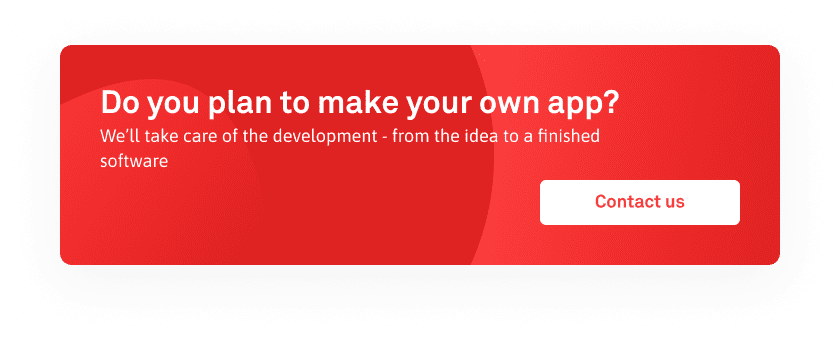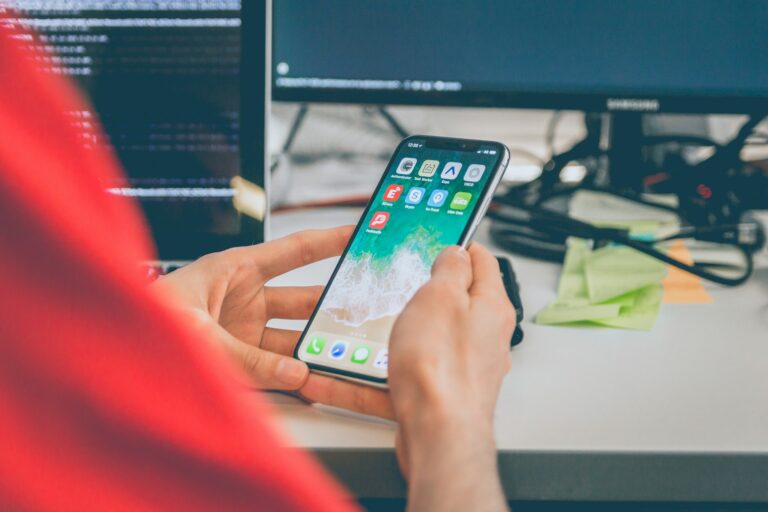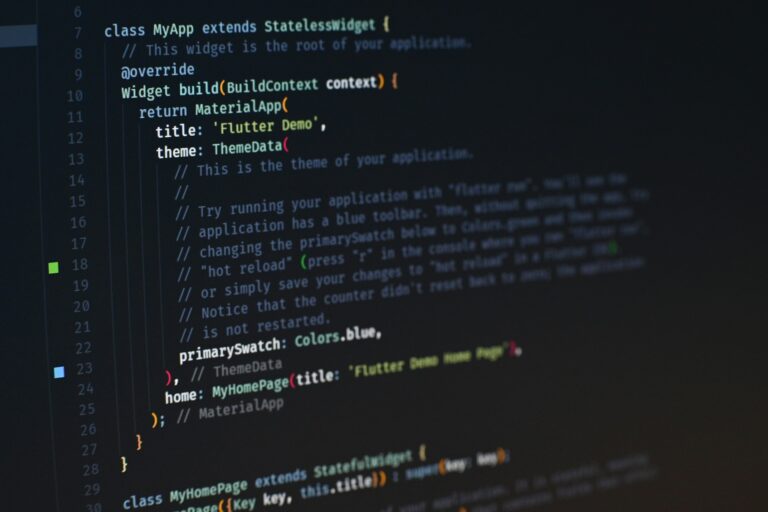Let me paint a picture. You’ve just spent the last few months with your development team developing an app that you’re extremely proud of. Like any good mobile app owner would do, you rush over the respective app store to release it to the world.
Before you know it, your excitement is completely shattered when you start running into one issue after the other. Not having enough funds to cover the entry fee, not being prepared for the entire process, not having the right monetization strategies, difficulty being discovered, and not knowing how to market your app are just some of the major challenges you start to face.
By the time your app is finally out in the world, you’re already frustrated beyond belief and things just don’t seem to be going as planned.
This is not how you imagined owning a mobile app — and it’s not how we imagined it either. That’s why we’re here to help you dodge those obstacles and give you the information needed to properly prepare for the release process.
Welcome to the Apple App Store
First, we’ll be looking at the iOS App Store, which houses approximately 1.85 million apps. It’ll see nearly 9,000 new apps added every month, but some months have recorded as high as 160,665 new app releases.
To give you a glimpse of what it’s like releasing an app in the App Store, we’ll detail all the major steps involved — entry fees, review process, monetization, discovery, and marketing. Let’s take a look!
What’s the entry fee for releasing an Apple app?
Anyone interested in building, releasing, and distributing their app in the iOS App Store will have to cough up a $99 fee every single year. If you decide to stop paying this yearly fee, your app will no longer be featured.
The good news is you get plenty of benefits once the fee is paid because you’ll enter the Apple Developer Program. Here are a couple of things you’ll receive with this membership, in addition to being able to release your app to the world:
- You get the ability to use various technologies and applications created by Apple to make your app more engaging — Maps, Apple Pay, HealthKit, HomeKit, and other APIs.
- Access to TestFlight allows you to beta test your app before an official release. First, you’ll be able to give 25 people on your team access to the app. Then, you’ll be able to invite up to 10,000 more people to try on their device.
- App Analytics allows you to view your app’s progress once released, including how engaged the users are, how your campaigns are doing, how much money the app has made, and much more.
The $99 might be a lot to some app owners, but it’s well worth the money if you can learn to take advantage of it.
How strenuous is the Apple app review process?
Once you submit the app for review, there will be a delay before it is shown in the App Store — if it’s shown in the App Store. This is because every app needs to be carefully reviewed by the Apple team before allowing it to be featured in the store. Without this, it would be very easy to release harmful and inappropriate apps.
Many people are under the impression that it could take weeks and even months before the official release, due to Apple’s gruesome review process. While this used to be the case, Apple has made great strides in making this process shorter and will often take only two days to be accepted.
Of course, you’ll be notified of any issues with the app if they choose not to feature it. In addition to that, they go through and automatically delete abandoned apps that aren’t being downloaded or updated.
What are the monetization options for the Apple app?
An app that doesn’t make money will be difficult to maintain and likely won’t see many updates in its lifetime. As we know, that won’t lead to success and will eventually lead to the death of the app. With that being said, you’ll need to have a monetization strategy prepared.
Apple allows you to list your app as a paid app and also gives you the option of in-app purchases with the StoreKit framework. If you were hoping for a subscription-based app, they make the model available to any app — no matter the category.
In terms of profit margins, Apple takes 15% of every transaction made through the app. You’ll be left with 85% of the transaction.
How will the Apple app be discovered?
You’ll want to have a solid marketing plan outside of the App Store if you plan on maximizing your exposure, but Apple does provide some useful tools and resources to help you within the store.
Search Ads in the App Store are where you can create an ad that’s shown to users when searching through the App Store. This can increase app visibility and get the app in front of interested users.
Apple is also making several updates to their App Store to help improve conversion rates for quality apps.
What will the Apple app page look like and feature?
Having an appealing store page for your app helps drive conversions and increase the user’s interest in downloading. In the App Store, there will be two main areas to focus attention — the featured image and the preview gallery.
The featured image is the first impression, so make it pop out to the user. The preview gallery is where you display engaging photos and videos displaying the app as the user will see it. Most of these videos won’t be watched past the six-second mark, so grab attention fast.
Welcome to the Google Play Store
Now it’s time to discuss the Google Play Store, which houses a staggering 2.56 million apps — nearly 700,000 more than the App Store. The Play Store sees nearly 6,000 apps released every day.
To give you a better idea of what the release process is like for Google apps, we’ll discuss the same features we discussed above — entry fees, review process, monetization, discovery, and marketing.
What’s the entry fee for releasing a Google app?
The entry fee for releasing an app in the Google Play Store is only $25. Better yet, you’ll only have to pay this fee once and will still gain access to a wide range of features through the Google Play Developer Console.
Here’s a breakdown of what you’ll receive after paying the fee:
- Cloud Test Lab allows you to view the app’s performance on different devices.
- Alpha and Beta testing allows you to pre-release your app to users, either in an open format or a closed format.
- Staged Rollouts allow you to release parts of the app before doing a full release, allowing you to detect and fix bugs as you release it bit by bit.
There are many more features available, but these will be some of the most notable ones related to the release of a Google app.
How strenuous is the Google app review process?
Google has long been praised for their quick and seamless review process, something that has only gotten better. Many apps will enter the Play Store after just a three-hour review process thanks to Google’s internal team of reviewers.
You’ll also be given a report before the official release, giving you valuable insights into bugs and errors experienced during the review process. This way you can address those bugs before the official release.
What are your monetization options for Google apps?
Much like the App Store, Google’s Play Store offers various opportunities to make money off a mobile app. With Google, your best bet will be through in-app advertising and in-app purchases. AdMob and In-app Billing are two of the features making this possible.
Subscriptions are also available with a Google app, but they aren’t as popular on Android devices compared to an Apple device. Of course, you’ll be able to view and manage all payments or transactions through the Developer Console.
In terms of profit range, you’ll have to give up 30% of all revenue — leaving you with just 70%. This can be credited to the fact that you only pay a one-time fee to release the app.
How will the Google app be discovered?
The Google Play Store has several features making it easy for users to view new apps being released. With Early Access, users are even able to view apps that haven’t been released yet — or are currently in beta. There’s also a Collections tab that gives the user recommendations on new apps to discover.
Google Ads will make it easy to gain exposure through the Play Store, YouTube, Google Search, and much more!
What will the Google app page look like and feature?
When users view an app’s page in the Play Store, they won’t have a featured image to grab attention — like the App Store. Instead, the preview gallery will be your best shot at grabbing a user’s attention.
Here, you can display YouTube videos and pictures of the app. It should be noted that most videos won’t be viewed past the six-second mark, so grabbing attention early is a must. Outside of that, a good description will go a long way.
Summarizing What We’ve Learned
There’s a lot of information detailed above, which is why we wanted to take a moment to break it all down for you with a quick summary. This will give you a clear idea of what the processes are like and how they differ from each other.
Let’s take a look: entry fees, review process, monetization, discovery, and marketing.
- Entry Fees – Google apps cost a one-time fee of $25; Apple apps cost a yearly fee of $99
- Review Process – Google apps will generally be listed in several hours; Apple apps may take several days
- Monetization – Google retains 30% of all transactions made; Apple retains 15% of all transactions
- Discovery – Google app pages feature a preview gallery and description; Apple app pages have a featured image, preview gallery, and description
- Marketing – both apps stores will feature ads and have several features designed to help startup/new apps
Now that you know the ins-and-outs of the release process for mobile apps, you can finally move forward with the release of your app with confidence. If you want further insight into the process, you can contact us today!
—
Photo by Mika Baumeister on Unsplash



